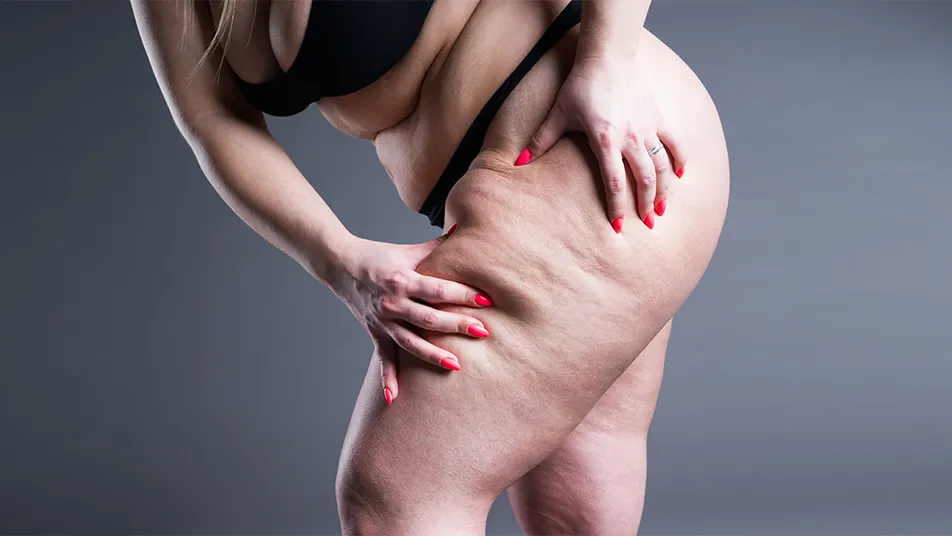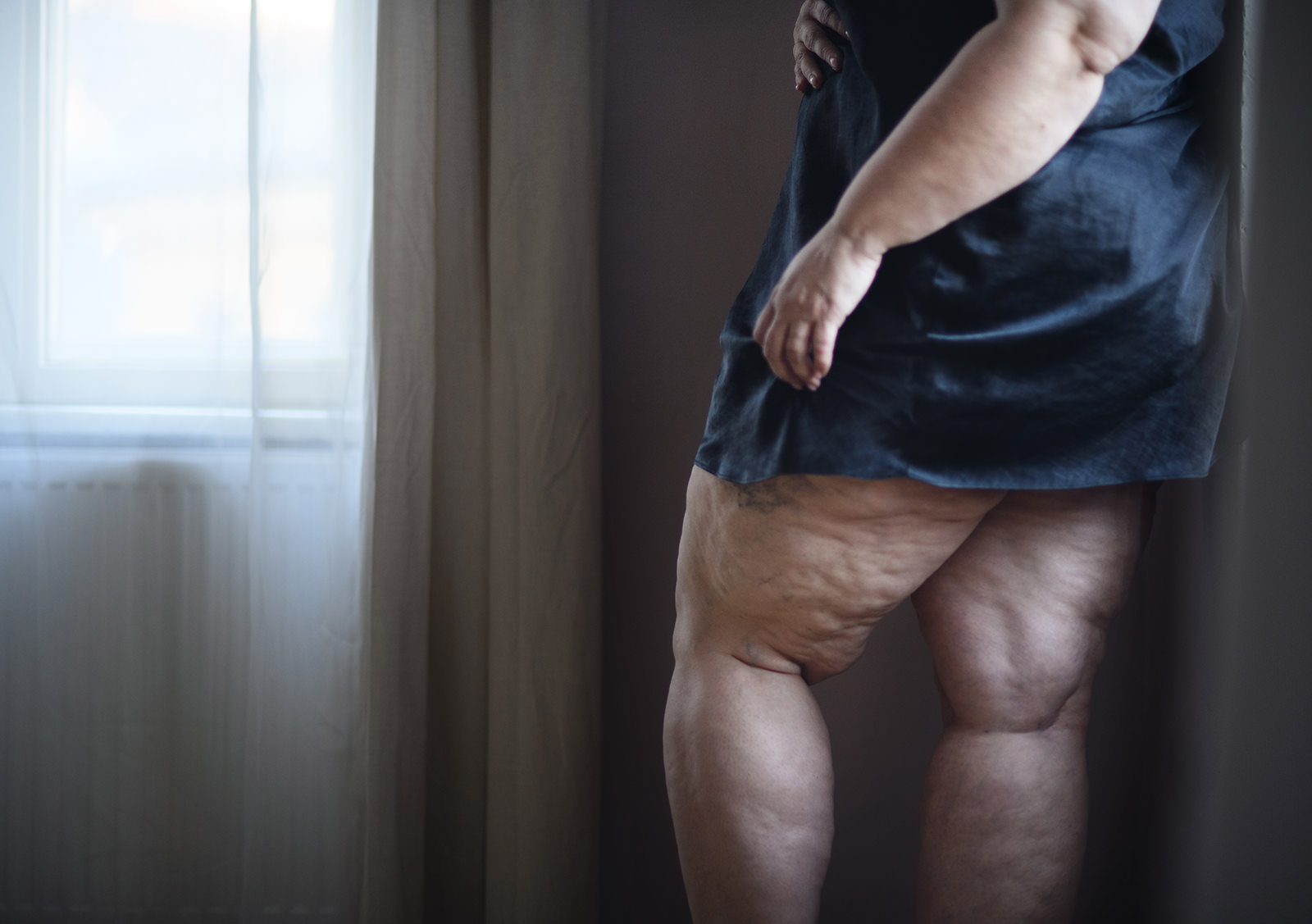Key Takeaways
-
Liposuction is gaining traction as a treatment for lipedema, with potential for symptom relief and better mobility.
-
Studies indicate that liposuction successfully reduces pain and swelling associated with lipedema. This procedure improves patients’ quality of life.
-
The liposuction procedure itself is a safe procedure. It’s important to evaluate each patient’s health and adhere to strict selection criteria.
-
It’s still unclear how beneficial it would be long-term, and clinical studies show promising outcomes, but more research is needed.
-
Current guidelines emphasize the importance of a comprehensive patient workup. They also emphasize the need to stick to protocols when using liposuction to treat lipedema.
-
Patients seeking liposuction for lipedema should speak with knowledgeable medical professionals. They have to figure out if they are a good candidate for the procedure and talk about possible results and risks.
Liposuction shines as a treatment for lipedema. You find it promising, particularly when handling obstinate fat buildup primarily in legs and arms. It’s more than just vanity; it’s about feeling better. Research shows liposuction helps many feel lighter and move easier. You can see life changes happening. Patients have reported experiencing less pain and swelling, which makes daily life a little easier. That said, it’s not all rosy. Your safety must always be paramount. Doctors monitor risks and the healing process closely. While liposuction can be life-changing, it takes careful consideration and planning. Policies may change as more people realize how useful it is. Liposuction for lipedema treatment may be a long-awaited game-changer, and you deserve to know all this, so let us help.
What is Liposuction for Lipedema
1. Definition and Purpose
Liposuction specifically targets fat deposits in the body. It’s the best-known way to treat lipedema. Now, lipedema is a somewhat dicey disorder. It’s progressive — it gets worse over time — and it mainly affects women. You’ll see fat build up in your legs and potentially in your arms. This is not the kind of fat you’ve heard about before. Instead, it comes with a lot of pain and swelling.
Your primary goal of fat removal in lipedema, the doctors say, is to alleviate those uncomfortable symptoms — heaviness, pain, and swelling. Liposuction does this by removing those painful fat deposits. The earlier it’s caught, the better, because waiting can mean more pain and complications down the road. The early diagnosis is what enables you to prevent things from deteriorating.
2. Historical Context
Liposuction has come a long way from its early days. It started off as more of an aesthetic thing, and now the medical world is realizing the benefit of it for lipedema. Over the years, techniques have changed, particularly for this specific use. Other key milestones include acknowledging lipedema as a condition that requires its own treatment.
The medical world is finally coming around to accepting liposuction as a viable option for lipedema. This shift is massive! Now, those suffering from the condition have an actual treatment course, one that emphasizes actual health and not just aesthetics. This evolution proves the need for specific treatments for specific ails.
3. Current Usage
Today, many people with lipedema opt for liposuction to treat their symptoms. More health care providers are starting to jump into this specialty, providing treatments that truly work. The procedure involves a tumescent solution. It makes the fat cells swell and blood vessels constrict, which makes it easier to suck out the unwanted fat.
Patient education is critical here. Knowing the potential benefits, such as long-lasting symptom relief, and the caveats is important. Some folks report feeling better, even, 8 years after surgery. It isn’t all sunshine and rainbows—there’s swelling, bruising, and discomfort for weeks after surgery. The road to recovery is long, spread out over months, and involves adhering to a care plan. Insurance coverage can be a barrier, with some plans not covering the costs.
Effectiveness of Liposuction
1. Reduction in Limb Size
Liposuction is an effective way to reduce limb size for people with lipedema. It targets and removes excess fat deposits, resulting in visible improvements. Patients frequently see significant reductions in thigh circumference, in some cases as much as several inches, and this can be life-changing. Other than it just looking better, this reduction has functional benefits, making everyday tasks easier to perform. You may find it easier to walk up stairs or more comfortably fit into clothes. It’s like giving your legs new life!
2. Improvement in Mobility
Liposuction doesn’t just change how you look; it can change how you move. Many studies find that lipedema patients have improved mobility after surgery. The mean restriction in movement score significantly decreased from 2.11 to 0.53. This change reflects a significant increase in physical function. Better mobility isn’t just about ease of movement; it can lower disability risks and even increase life expectancy. You may even like things that you used to feel were too difficult.
3. Alleviation of Pain
One of the most celebrated outcomes of liposuction for lipedema is pain reduction. Usually after surgery, patients report a marked decrease in pain. This improvement allows them to more comfortably participate in daily activities. The mean feeling of tension score decreased from 7.52 to 3.26 after 37 months, providing substantial relief. It’s this pain relief that matters most, as it improves quality of life and the ability to engage in social and physical activities. If you combine liposuction with pain management strategies, you may further enhance those outcomes.
4. Decrease in Swelling and Bruising
Following liposuction, patients often experience less swelling and bruising due to improved techniques that reduce damage to nearby tissues. This means less downtime and discomfort. Many testimonials from patients note a more healthy appearance and comfort of the skin after treatment, resulting in an easier recovery. Some studies mentioned temporary effects, including bruising and burning sensations. However, these effects commonly clear up quickly.
Safety of Liposuction Procedure
1. Common Risks and Complications
You must understand the risks of going under the knife. Liposuction, like any surgery, has its pros and cons. We’re talking about things like seromas, which are basically fluid pockets, and hematomas, or bruising under the skin. There’s some scary stuff to think about too, e.g., bad reactions to anesthesia. This is something you should talk to your doctor about! It’s also sort of a checklist type of thing; you need to know what you’re signing up for. So, before you make any big decisions, have a heart-to-heart with your healthcare provider. They can help you weigh the pros and cons and answer any burning questions you might have.
2. Safety Measures and Guidelines
First and foremost, be safe. With liposuction, especially for lipedema, there are some rock-solid safety protocols. Think of these as the road rules for surgeons. Preoperative assessments are a biggie. They check for any hidden health problems that could complicate things in surgery. Adhering to clinical guidelines is non-negotiable. Those guidelines are to ensure the procedure’s done right and you come out the other side safe and sound. It’s like a recipe; each of them is a step, and it all has to be done properly.
3. Postoperative Care and Recovery
Once the surgery’s over, the focus is on the healing. Postoperative care is extremely important to help you recover. You’ll have to adhere to some specific practices, such as keeping the surgical area clean and possibly wearing the compression garments. The recovery timeline varies, but most people can resume their normal activities in a few weeks. Don’t skip those follow-up appointments! They’re your opportunity to ensure everything’s healing properly and to address any hiccups early. Consider it your personal aftercare plan to get you back on your feet.
Clinical Outcomes and Research Findings
1. Overview of Clinical Studies
Let’s get right into the meat of the studies on liposuction for lipedema. While research shows liposuction can help, the studies are as varied as the people they include. Some focus on different backgrounds, ages, and stages of lipedema. For example, the median age was 44 years, with patients aged between 20 and 81. Seven had Stage I, 50 had Stage II, and 48 had Stage III lipedema. These studies combine various methods, including 3D imaging and sensitivity scores. They analyze these approaches to determine how effective the treatments are. The mean sensitivity to pressure score decreased from 7.38 to 3.98 after 37 months, which isn’t shabby at all. We need more studies to really get a solid grip on what’s working best. It’s like needing more puzzle pieces to see the whole picture.

2. Key Findings on Effectiveness
Now, what’s the good news about liposuction for lipedema? Research shows big wins for those who go through the procedure. Patients see a major dip in symptoms—like less pain and swelling—which means a better quality of life. After 24 months, each patient improved in their movement. Remarkably, 86% saw major improvements or completely reversed their impairments. Even though 14% reported minor to medium improvement, that’s still something. Additionally, leg volume decreased by 6.9%, from 18.0 L to 16.8 L, enhancing comfort during daily tasks. These results are crucial in getting more people to accept liposuction as a legitimate treatment tool.
3. Critical Appraisal of Research
We have to view these studies with an eagle eye. There’s a need to identify the strengths and weaknesses. For instance, some patients did report improved movement, but others experienced occupational disability after surgery. Transient problems such as methemoglobinemia and bruising were common. Post-operative pain lasted up to 7 days for 14% of patients. For 35.7%, the pain lingered 14 days; for 50%, more than 14 days. These findings compel us to consider how they translate to real-world patient care. We need more research to fill in the gaps about long-term effects and refine treatment plans. It’s about ensuring we provide the best care possible with the information available to us.
Impact on Quality of Life
1. Patient Testimonials and Experiences
Real-life stories show how liposuction for lipedema can help people live incredible transformations. These changes are life-changing for the people who experience them. Many patients discuss how the procedure has provided them with great relief from pain and increased their mobility. For example, one patient wrote about how walking, which previously used to hurt, was manageable after surgery. These stories are certainly inspiring; they’re also hopeful and instructive to people who are thinking about the treatment. In these testimonials, common themes include boosted self-esteem and a significant reduction in discomfort. These shared experiences are key for educating and comforting potential patients about their choices. When you hear someone else state something along the lines of “I can finally enjoy my daily activities without pain,” it strikes home.
2. Long-term Benefits
The long-term benefits of liposuction for lipedema are significant. They often report lasting relief from symptoms, which helps them function better on a daily basis. Imagine not having to rely on conservative therapy that much, or even at all, after surgery. This alone enhances quality of life and could eventually reduce healthcare costs. For instance, some patients who had liposuction said they no longer needed to use conservative therapies at all. The appeal of focusing on ongoing lifestyle changes to effectively maintain the results of the surgery includes adopting a healthy diet and incorporating regular exercise. It’s like getting a clean slate and then carrying it forward for the rest of your life.
3. Psychological and Emotional Effects
Living with lipedema can take a toll on one’s mental health, often affecting self-esteem and social interactions. Surgery can significantly reduce this emotional burden. Patients frequently experience a remarkable increase in their mood and confidence following liposuction. That’s why it’s so crucial to address mental health alongside physical treatment. Counseling and support groups can be invaluable here. They provide an emotional space to share and heal, as well as support during physical recovery. More than half of women diagnosed with stage II lipedema see significant improvements, and this progress really elevates their mental health, too, so it’s more of a complete recovery.
Patient Selection Criteria
1. Eligibility for Liposuction
When considering liposuction for lipedema, it’s important to understand who’s appropriate for the procedure. The eligibility requirements are fairly important. We’re talking physical health and a diagnosis of lipedema by a doctor. It’s not simply about wanting it — it’s about needing it, medically. You’d want an extensive medical review to ensure that it’s okay for you. This oftentimes involves looking over your general health condition, background, and any potential risk factors. Having realistic expectations is key. While liposuction can help manage symptoms, it isn’t a magical fix. It’s really more about quality of life and reducing the discomfort.
2. Preoperative Assessments
Before you even think about surgery, there’s all this pre-op stuff to go through. It’s like a safety checklist to make sure you’re ready for the procedure. This could include imaging studies such as MRIs or ultrasounds to observe how far the lipedema has progressed. Lab tests are also included to ensure your body is ready for surgery. This is where patient education is important. You’ll know what to expect before, during, and after the surgery. Knowing all of this puts your mind at ease and prepares you for a smoother recovery.
3. Considerations for Special Populations
For certain groups such as older adults or individuals with chronic conditions, there are special considerations. It’s really getting into treating the very specific need. For example, an older patient may require certain strategies that differ from those of a young adult. If there are comorbid conditions, like diabetes or heart issues, then a multidisciplinary approach is critical. That means consulting with multiple specialists to ensure the best possible outcome. It’s just the right balance to handle the hard cases.
Policy and Guidelines for Liposuction Use
1. Current Policy Considerations
When we talk about policies around liposuction for lipedema, it’s a patchwork quilt. Different places have different rules affecting who can get treatment. Some have slightly more open access, but others may have stricter guidelines. Insurance plays a big part in this. If insurance doesn’t cover liposuction for lipedema, it cuts off options for many patients. Imagine needing a treatment but not being able to afford it because it’s not covered. That’s why advocacy is so important. We need voices pushing for better policies so everyone can get the care they need. Advocacy groups are fighting to transform these frameworks to make treatment more accessible and equitable across the board.
2. Guidelines from Medical Associations
Medical associations are like your GPS for healthcare—they will guide best practices. They have guidelines for liposuction in lipedema treatment that prioritize safety and effectiveness. Following these guidelines isn’t just good advice—it’s the key to safety and success with patients. If you don’t adhere, and doctors don’t adhere, it could lead to complications. You have to stick to these rules. The providers have to keep learning. Medicine changes, and being up to date on the most current research and techniques helps to guarantee that anyone who comes to you receives the most optimal care. This is where workshops, seminars, and continuous education come into the picture.
3. Implications for Healthcare Providers
Healthcare providers have a huge job. You have to educate patients on all the liposuction options out there. That means explaining the risks, benefits, and what they can expect. Providers also need to stay informed on the latest guidelines and research. It’s sort of like being a student forever, but it’s necessary for providing the best care possible. Collaborative care is another key piece. Working with other health care professionals ensures comprehensive treatment, addressing all aspects of lipedema. A team approach makes a huge difference in patients’ experiences and outcomes, in addition to providing a more holistic experience.
Limitations and Future Research Directions
1. Gaps in Current Research
Currently, there are some substantial gaps in our knowledge of using liposuction for treating lipedema. For one, we don’t have much data on long-term outcomes for people who do it. How are they doing a year, five years out? There’s also a big question mark around patient satisfaction. Is everybody really happy with the results, or are a few of the same complaints coming up?
The psychosocial side of lipedema treatment seems to be flying under the radar. How does having the surgery impact mental health or daily life? These are the types of questions that deserve more focus. We must remember that liposuction isn’t the only option out there. Consider supplements, dietary changes, or physical therapy as alternative treatments.
2. Areas for Further Study
We need a lot more research to make liposuction even better for treating lipedema. That means focusing on key areas such as how to optimize surgical protocols. Simple things, like determining the best anesthesia or incision methods, could have a significant impact. Interdisciplinary studies could provide new perspectives on lipedema by bringing together experts from fields like dermatology, psychology, and nutrition.
We have patient-centered research, which is really important. Understanding what patients want and need first will inform what options we have in the future for treatment. This may result in more personalized care plans that address individual needs. Thus, treatment becomes not just effective but soothing.
3. Potential Advancements in Treatment
There’s some interesting stuff going on in the liposuction space. New technologies and techniques are emerging all the time. For example, you may get better results with shorter recovery times by using ultrasound or laser-assisted liposuction. It’s not just about the surgery itself. Pairing liposuction with nonsurgical therapies, such as lymphatic massage or compression garments, can create a more comprehensive approach to treatment.
Innovation is at the heart of tackling these challenges for those with lipedema. Staying ahead of the curve is important so patients improve quality of life. That can be done by creating new devices and by coming up with smarter ways to treat.
Conclusion
Let’s tie it up.
Liposuction for lipedema stands out as a good option for many patients. While it cuts away troublesome fat, it can also increase quality of life. It’s not for everyone. Careful selection matters a lot. Clinics have to comply with strict rules to ensure patients are safe.
More research continues to explore more about this treatment. Experts also want to discover better methods and long-term effects. If you’re considering this path, consult a knowledgeable healthcare professional. They’ll get you the scoop, customized for your sitch.
Let’s talk about this some more or do something. Reach out, educate yourself, and see whether liposuction is an option for you. Your path out the other side, your journey to comfort and health, is worth every chat.
Frequently Asked Questions
What is liposuction for lipedema?
Liposuction for lipedema is a surgical procedure to remove abnormal fat. It removes excess fat tissue, which helps relieve pain and mobility problems caused by lipedema.
How effective is liposuction in treating lipedema?
Liposuction reduces the symptoms of lipedema. It increases mobility, reduces pain, and leads to a better quality of life. Patients frequently report long-term benefits after the procedure.
Is liposuction for lipedema safe?
Liposuction for lipedema is generally safe when performed by experienced surgeons. It’s important to select a certified specialist so that you can minimize your risks and get the best possible results.
What are the clinical outcomes of liposuction for lipedema?
Studies demonstrate favorable clinical outcomes, including pain reduction, improved mobility, and enhanced quality of life. Long-term results are promising with consistent patient follow-up.
Who is a good candidate for liposuction for lipedema?
Ideal candidates have a confirmed lipedema diagnosis, stable weight, and no significant health issues. A complete evaluation by a specialist is required for eligibility.
What guidelines exist for using liposuction in lipedema treatment?
Policies recommend liposuction for patients with significant symptoms impacting daily life. Guidelines stress selecting qualified surgical hands and thorough preoperative evaluations.
What are the limitations of liposuction for lipedema?
Liposuction to treat lipedema does not cure the disease, but it does relieve symptoms. Ongoing monitoring and additional research are required to refine treatment protocols and outcomes.





